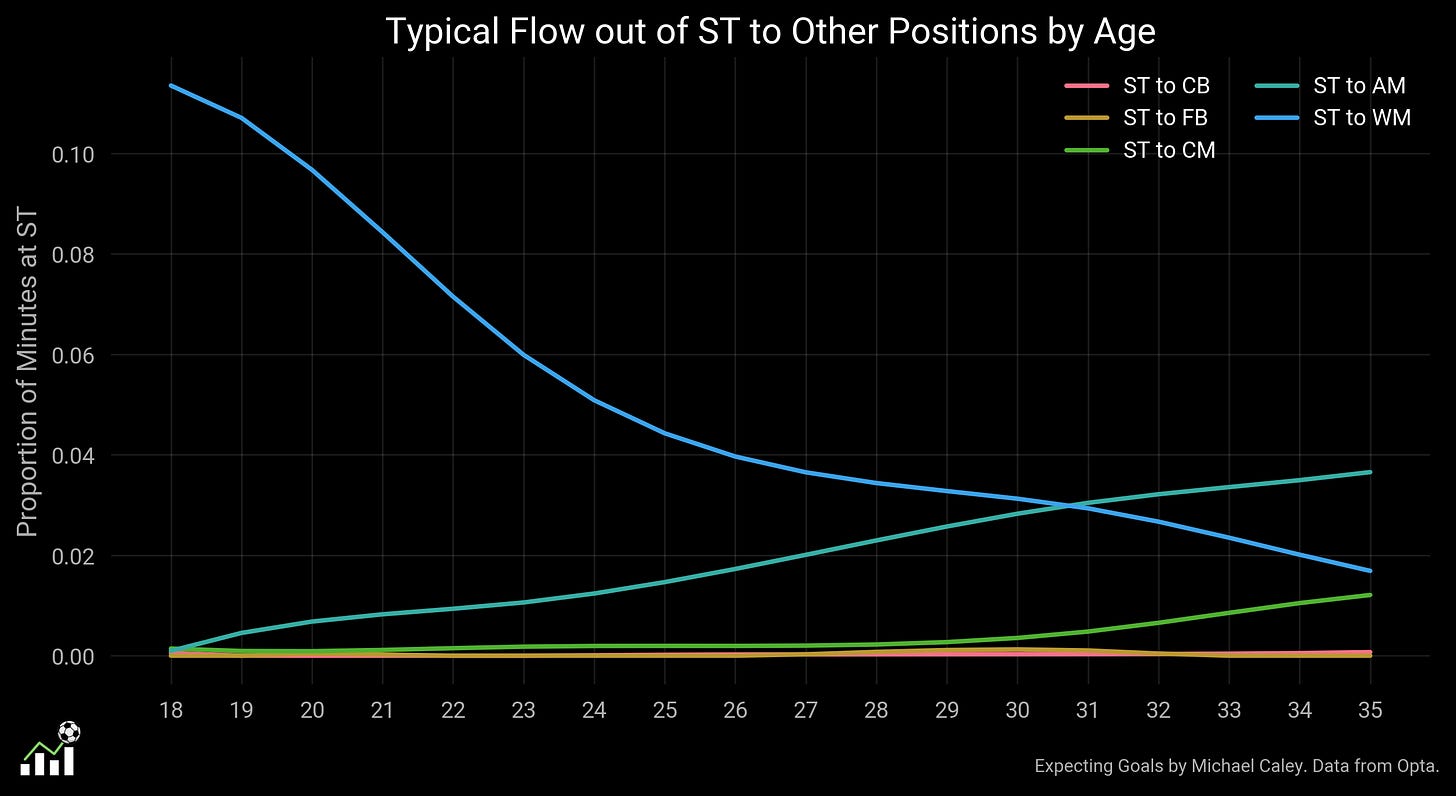Building Marcel, Part III: Contexts and Confounders
Using positional data and modeling to suggest the next steps forward and what may have been missed in the previous newsletters.
The final boss of soccer analytics is context. In the last newsletter I looked at age curves for various statistics, and I found some striking effects, like earlier peaks for carrying and dribbling than for shots and an earlier peak for shots than shots assisted or progressive passes. But these effects appear only within a larger contextual frame. Players’ positions and touch profiles move gradually away from goal as they age. This raises the question, to what degree have the statistical age-curve effects reflected the real tendencies of player skills to change over time, and to what degree do they reflect changes in tactical use? Obviously these two effects are overlapping, as players whose ability to get separation against a defender declines while their creative passing improves will be moved deeper on the pitch simply as a recognition of those skills.
Every individual statistic in soccer carries within it the dynamism of the game. The work of soccer analytics is finding ways to pull apart and measure the various, overlapping relationships that are encoded in every measurement of team and player actions on the pitch.
Over the next several newsletters,1 I will examine new ways to account for these contexts and possibly offer revisions to previous results. As a first step, I have taken some of the results of the previous study and re-built models around them to look for places where contexts may be showing through. This newsletter will dig into the player-position data from the last study to offer a few new ways to identify the dynamic, tactical effects, and then examine the influence of larger competitive environments on player longevity.
The Positional Aging Spectrum
Players typically get on the ball further and further away from goal as they age, but this finding about touch profiles can be deepened with positional data. I took the playing time by position records of players from 2010-2025 in the big five leagues and built a generalized additive model to predict playing time by position in the next season with age as a factor. This creates an estimate at each age of how much a player retains their playing time at a particular position or is likely to move to a different position.
As in the previous studies, I have grouped positions together in large buckets: center back, fullback, central midfielder, wide midfielder / winger, central attacking midfielder, and striker. To begin, this is the model output for the positional aging paths of strikers.
This shows that players who get minutes at striker at a young age are often converted to wide attackers, but the tendency to move to the wing dissipates by the early 20s. There is over time a small increase in movement from striker to the 10, but ultimately strikers do not move off the position commonly after the age of 26 or so. This model suggests that after peak age, strikers tend to stay at striker with a retention rate around or above 90 percent.
If you add up the model outputs for all the different positions at age 26, you get 0.04, or 4 percent to WM, about 2 percent to AM, and negligible numbers elsewhere. That means that maybe 7 percent of minutes at striker are not retained but move to another position, and a player who plays striker at age 26 should be expected to play about 93 percent of their minutes at striker in the next season.
Although it is the case that players tend to move further away from goal as they age, this effect does not seem to be reflected in the data on positional changes among strikers. And it is also hard to find among wingers and wide midfielders.




